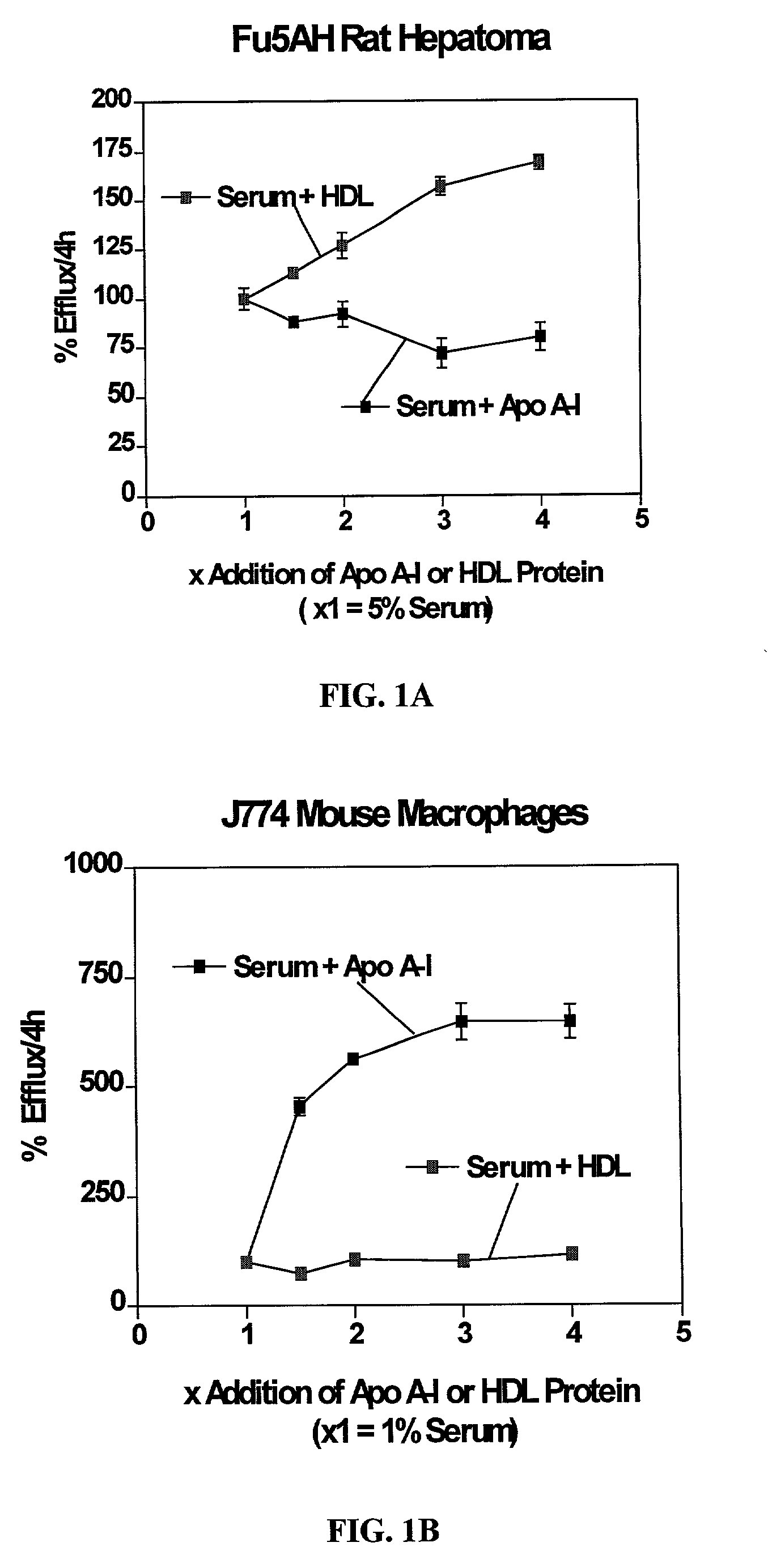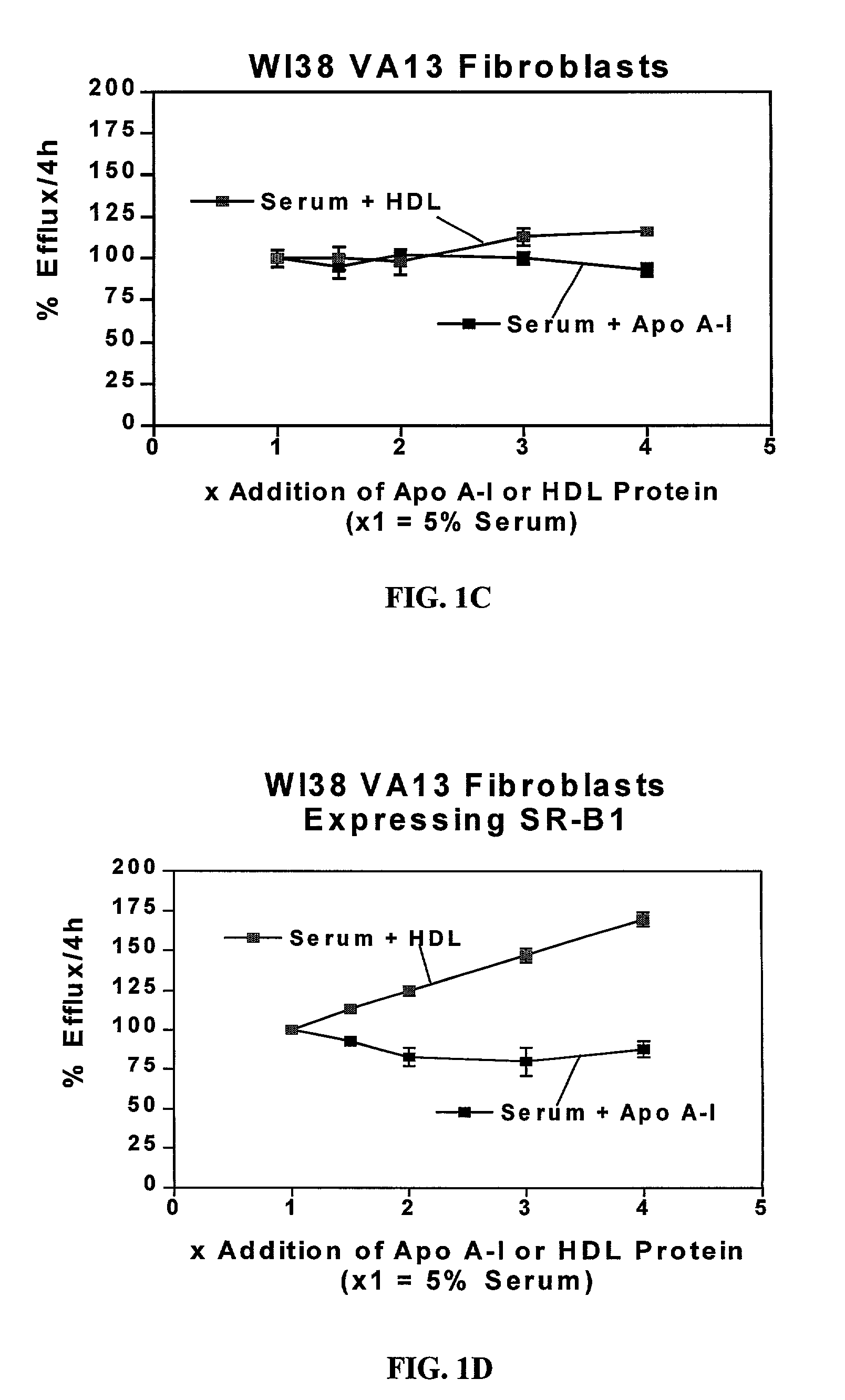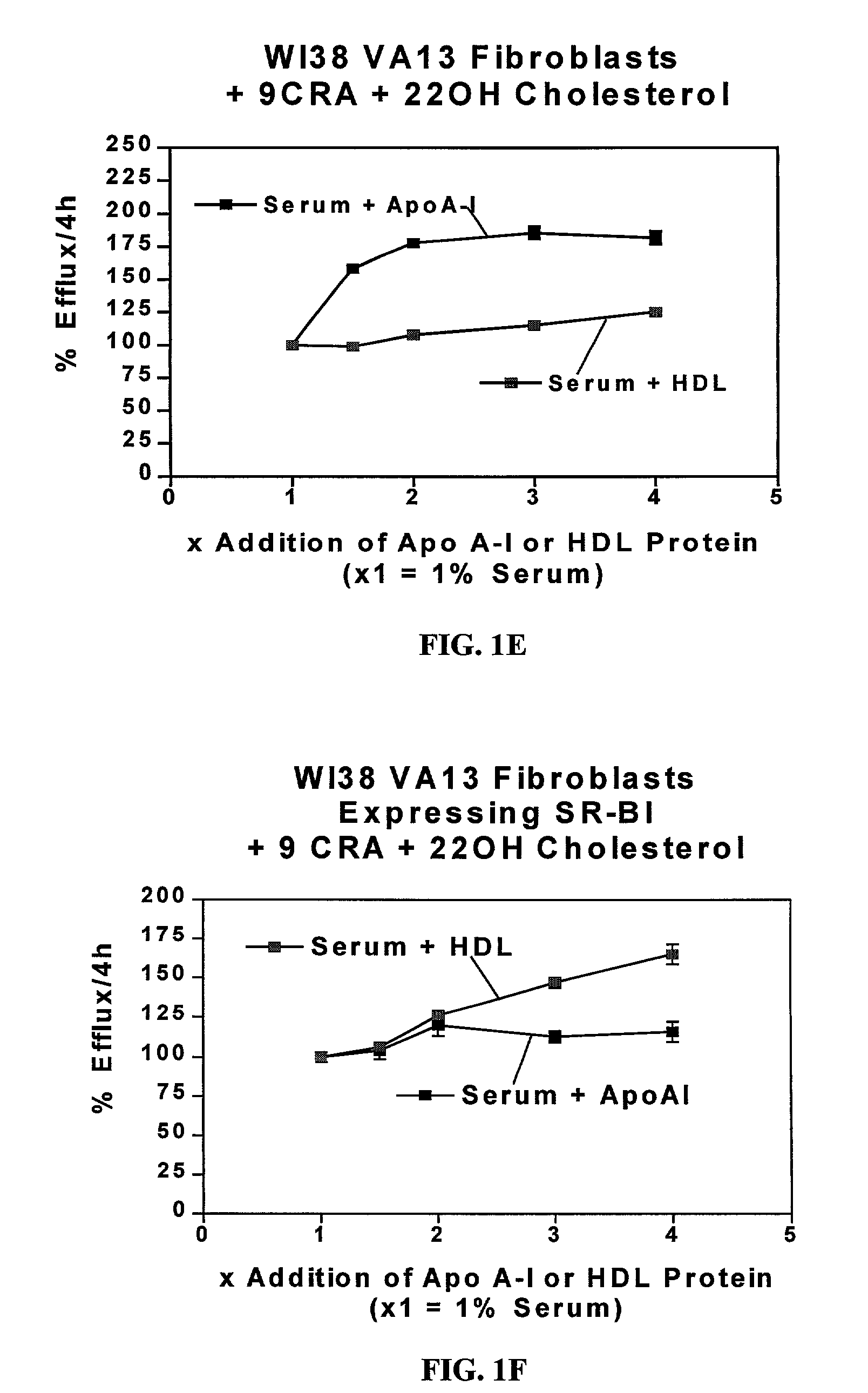Cell culture system for determining the cholesterol efflux potential for serum
a cell culture system and serum efflux technology, applied in the field of cell culture system for determining the serum efflux potential of cholesterol, can solve the problems of major health problems such as elevated blood cholesterol, and achieve the effects of enhancing serum efflux potential, promoting cell cholesterol efflux, and improving the ability to identify
- Summary
- Abstract
- Description
- Claims
- Application Information
AI Technical Summary
Benefits of technology
Problems solved by technology
Method used
Image
Examples
examples
[0026]The invention now being generally described, it will be more readily understood by reference to the following examples which are included merely for purposes of illustration of certain aspects and embodiments of the present invention and are not intended to limit the invention.
Expression of SR-BI and ABCA1 in Cultured Cells to Detect Cell Cholesterol Efflux
[0027]FIGS. 1A–1F illustrate that the expression of SR-BI and ABCA1 independently in cultured cells can be used to detect cell cholesterol efflux to human sera with different levels of apolipoprotein AI, high density lipoprotein (HDL) or high density lipoprotein3 (HDL3). To demonstrate that the assays could detect differences in efflux potential among serum samples, a single sample of human serum was used and was increased in either apo protein AI or HDL3 concentration by adding to the serum increasing levels of Apo AI or HDL3. The control and supplemented serum samples were then diluted in tissue culture medium and incubate...
PUM
 Login to View More
Login to View More Abstract
Description
Claims
Application Information
 Login to View More
Login to View More - R&D
- Intellectual Property
- Life Sciences
- Materials
- Tech Scout
- Unparalleled Data Quality
- Higher Quality Content
- 60% Fewer Hallucinations
Browse by: Latest US Patents, China's latest patents, Technical Efficacy Thesaurus, Application Domain, Technology Topic, Popular Technical Reports.
© 2025 PatSnap. All rights reserved.Legal|Privacy policy|Modern Slavery Act Transparency Statement|Sitemap|About US| Contact US: help@patsnap.com



